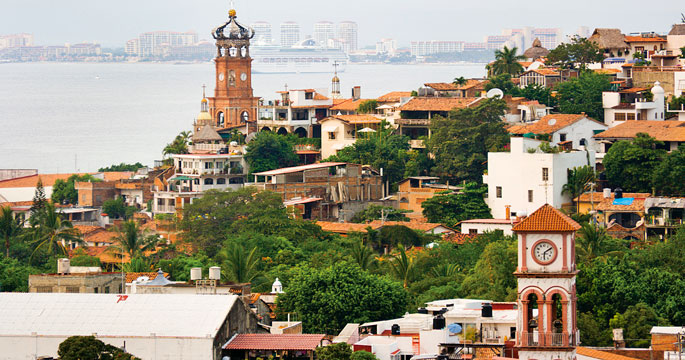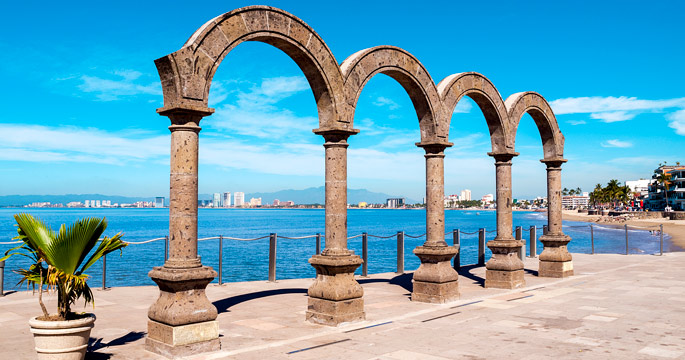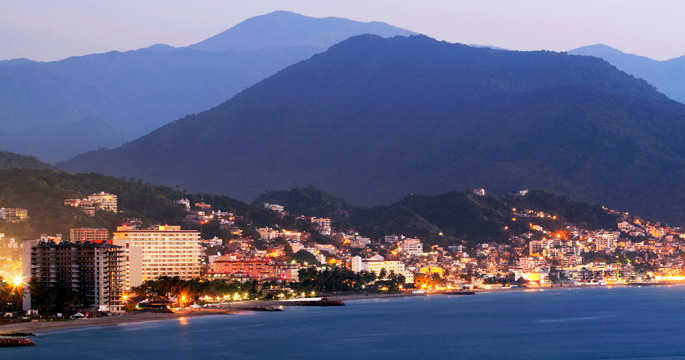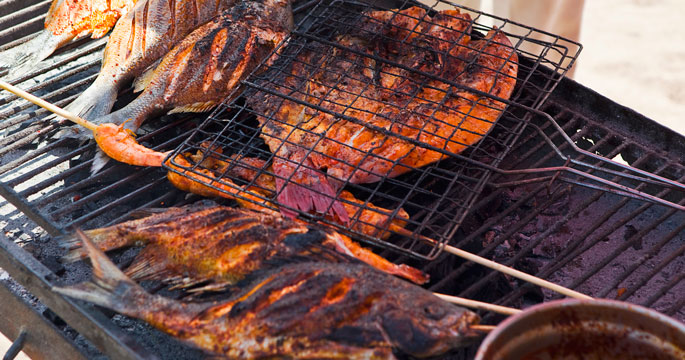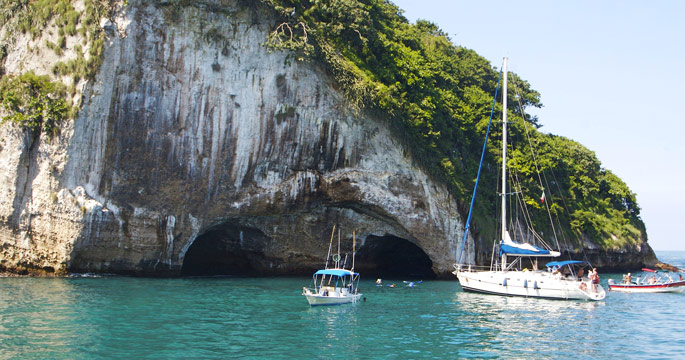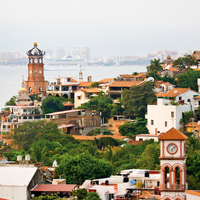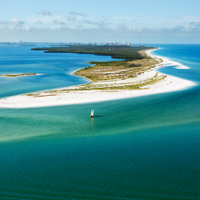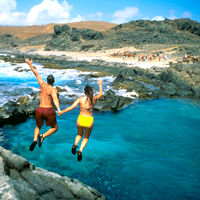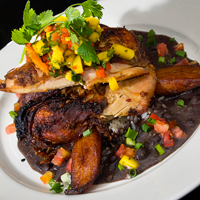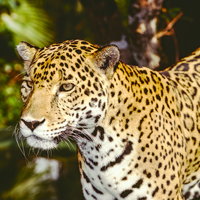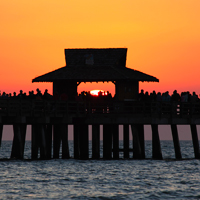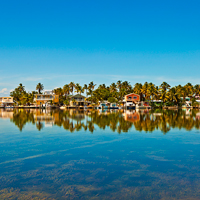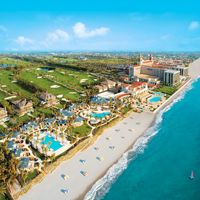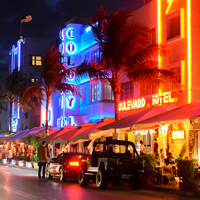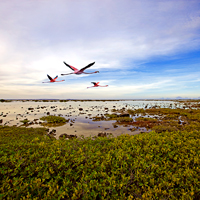Backed by mountains and embracing the sea, Puerto Vallarta welcomes visitors with a spirit of genuine hospitality. Here, beach culture meets local flavor, and the glitz of modern resorts mingles with the charm of cobblestone streets. One can remain in the center of the action, cloister in an all-inclusive on the edge of town or migrate to a quiet seaside village a few miles to the north or south. Regardless of venue, the Puerto Vallarta resort area remains one of Mexico’s favorite seaside escapes.
1 A Warm Place
With an average of 320 days of sunshine each year, Puerto Vallarta provides ample solar energy for sun worshipers, while the Pacific Ocean mitigates air temperatures to an annual 80- degree average. Weather isn’t the region’s only warmth. Signs leading into town proclaim it “The Friendliest City in the World,” and most feel this claim is justified.
2 The Big Bay
Puerto Vallarta overlooks expansive Banderas Bay, which encompasses 26 miles of coastline within its north-to-south arch. The open waters of the bay are a playground for sailors, while the shores are lined with small fishing and resort villages with beaches that offer everything from surf breaks to calm coves ideal for snorkeling and wading. Some of the favorite sandy strands are adjacent to downtown and the resort districts, while other prime swimming spots are accessible only by boat.
3 Updated Amenities
As one of Mexico’s most significant tourism zones, the Puerto Vallarta region has benefited from significant investments in airport, roadway and hotel infrastructures over the past four decades. These improvements have not overshadowed the personality of the city, which remains rich in culture and tradition.
4 Island Oasis
The Cuale River runs through Puerto Vallarta and into the sea. Near its mouth, a green island of the same name has become one of the city’s favorite in-town getaways. Swinging pedestrian bridges lead to a collection of small restaurants and shops that line shaded walking paths. Cuale Island is also home to a crafts market and cultural center, and the eastern end is maintained as a forested park that attracts visitors and locals alike.
5 Huichol Art
The artwork of Mexico’s indigenous Huichol people is prized by collectors. These painting-like tapestries, which are fabricated from colorful yarns, often depict cultural icons that are sacred or important to Huichol culture. Puerto Vallarta is one of the best places in Mexico to find authentic examples of this artwork, and there are a number of shops and galleries on Lazaro Cardenas that specialize in original examples.
6 On the Waterfront
Tourists and locals alike make their way to the shore to stroll the palm-lined waterfront promenade known as El Malecon. Benches invite relaxation and are an ideal place from which to watch street performers or contemplate the statues placed along a 12-block stretch of walkway flanking Los Muertos Beach.
7 An Aquatic Treasure
At the south end of Banderas Bay, some eight miles from Puerto Vallarta, a group of near-shore rock formations mark the site of Los Arcos National Marine Park. The shallow and usually calm waters surrounding these outsized boulders teem with fish life, and the numerous crevices and ledges create an aquatic playground for snorkelers and divers. A number of excursion boats make daily trips to the site.
8 Market Value
Located near the Cuale River, and on the border between downtown and Old Town, the Municipal Market provides an authentic taste of local commerce. Here, hundreds of small stalls brim with every conceivable type of merchandise, from the necessary to the whimsical, and the prices are always negotiable. On second-story enclaves above the open-front stalls are another wave of vendors, along with a collection of small local eateries.
9 Highland Adventures
The Sierra Madre Mountains, which rise just east of the city, offer a cool, green backdrop to the sun-soaked coast and provide for a wide range of day-trip adventures. Small villages await discovery, mountain roads lead to sweeping vistas, and tree-lined trails lie ready for exploration by foot, horse, mountain bike or off-road vehicle.
10 The Romantic Zone
South of the Cuale River lies the district of old Vallarta, which has earned the nickname of Romantic Zone. It is an area of narrow cobblestone streets and traditional buildings, which house galleries, shops and many of the city’s best restaurants. Come nightfall, it’s also the epicenter for entertainment, with music and laughter spilling into the streets.

